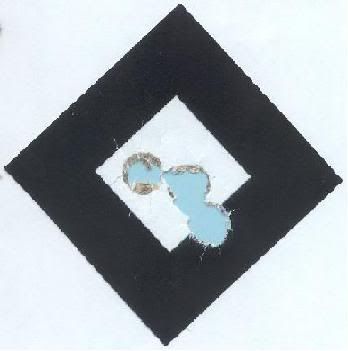How about the rifling twist formula I think it was Greenhills or something like that. ?anybody remember?
rayb
The Greenhill Formula is far from perfect, but it is still the "handiest tool" available for quick reference.
Researching the Greenhill formula you will find three constants. The original constant was 150, it was later modified for smokeless powder by using 180, then in the last few years has been revised again to meet the standards of todays muzzleloaders....or, so I'm told.
..........................................................
One of the first persons to try to develop a formula for calculating the correct rate of twist for firearms, was George Greenhill, a mathematics lecturer at Emanuel College in Cambridge, England. His formula is based on the rule that the twist required in calibers equals 150 divided by the length of the bullet in calibers. This can be simplified to:
Twist = 150 X D2/L
Where:
D = bullet diameter in inches
L= bullet length in inches
150 = a constant
This formula has limitations, but works well up to and in the vicinity of about 1,800 f.p.s. For higher velocities most ballistic experts suggest substituting 180 for 150 in the formula.
...........................................................
Using the above formula, lets work out a couple of quick "rate of twist's" for a .54 caliber round ball.
D2= Diameter .535(squared=.286225)
L= Length .535
C= Constant of 150 (original constant)
So.... D2 (diameter squared) times constant of 150 = 42.93
over, or divided by length of .535 = 80.25
Therefore; the best ROT (Rate of Twist) for the .54 caliber round ball is 1:80.25
...........................................................
If we substitute 180 as the constant for the .54 caliber round ball, we will see......
D2= Diameter .535 (squared = 0.286225)
L = Length .535
C = Constant 180 (modified constant)
So....Diameter squared x constant of 180 = 51.5205
over, or divided by length of .535 = 96.3
Therefore; The best ROT (Rate of Twist) for the .54 caliber round ball is 1:96.3
...........................................................
One can readily see the differences the constant makes. Most Black Powder shooters, as least the ones that I know, prefer to use a constant of 130 to more closely match the twist of modern rifle barrels available today.
Using a constant of 130 we see that;
D2...is the same @ 0.286225
L....is the same at .535
C....is changed to 130 (most likely best constant for ML)
So....D2 x 130 = 37.20 divided by L = 69.55
Therefore the best twist rate, using todays standard barrels, would be 1:69.55 for the .54 cal round ball.
Note; The use of the Greenhill formula is much better served when using conicals in muzzleloaders. Then you can we see why a slow twist is recommended for a RB, and a fast twist for conicals.....I personally hold more faith in the Greenhill for this purpose than any other.
Russ







